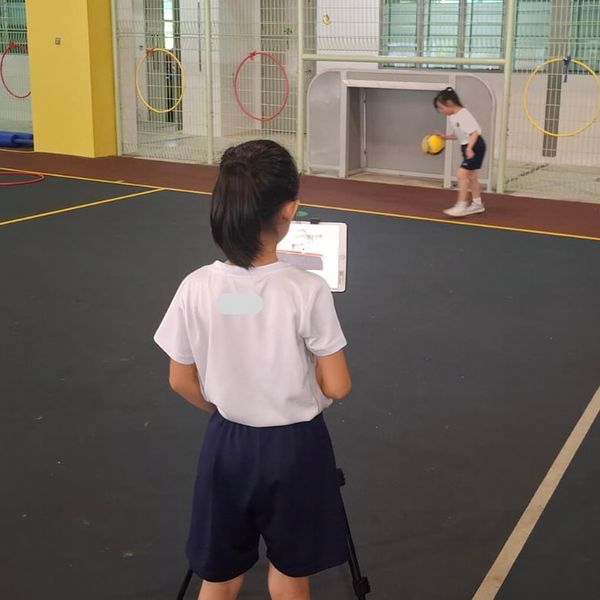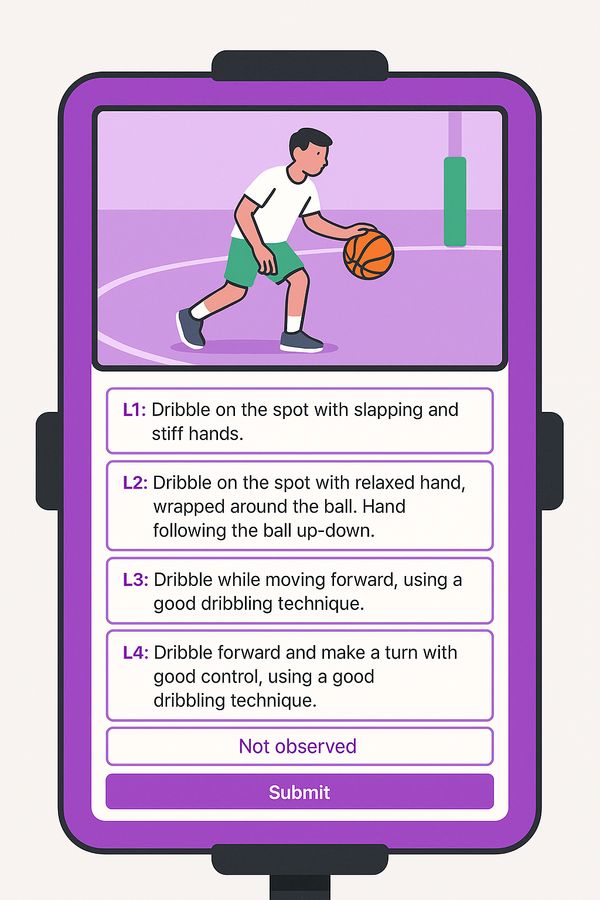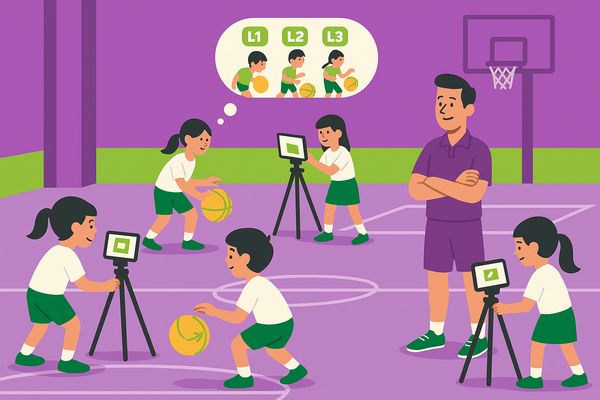
A Practical Look:
Using Mangostin for Rubric Assessment with Video in Primary 2
At a primary school in the west of Singapore, a Primary 2 PE class tried something new: using Mangostin to make rubric-based assessments faster and more meaningful for both teachers and students.
Why we tried it
Rubric assessments are valuable, but they’re time-consuming. Teachers juggle clipboards, jot notes in the moment, and then spend extra hours writing it all up later. Feedback gets delayed, and students rarely get a chance to see themselves in action.
Mangostin makes the workflow simpler: record short clips, tag them against rubrics, and give feedback on the spot.
How it worked in class

A Primary 2 student records while their buddy performs the dribbling task.
Students worked in pairs on a basketball dribbling task:
- One student dribbled while their buddy used Mangostin to record the video.
- After performing, the dribbler watched the recording on the tablet.
- On-screen, they tapped the rubric cues they observed in their own performance:
• L1: Dribble on the spot with slapping and stiff hands
• L2: Dribble on the spot with a relaxed hand, wrapped around the ball, hand following the ball up and down
• L3: Dribble while moving forward, using a good dribbling technique
• L4: Dribble forward and make a turn with good control, using a good dribbling technique
The class quickly learned how to switch profiles in Mangostin, making it easy to record and review multiple students without slowing the lesson. The teacher also set up two test stations, and the students rotated through them on their own, running the process almost automatically.
After the session, the teacher reviewed the student videos and self-assessments then added his own assessment on top using the Mangostin App. In future, they could have taken it one step further by publishing the video, the self-assessment, and the teacher’s assessment directly into each student’s Mangostin portfolio — but in this trial, the results stayed within the app.
What the students saw
Ownership shifted immediately. Instead of waiting for a grade, students watched themselves on video, compared their movements with the cues, and made a call on their level.
The buddy system kept everyone engaged: recorders paid closer attention to technique because they knew they’d be reviewing it together.
The teacher had expected that students might just tap cues randomly, but was pleasantly surprised. The Primary 2s took their time to watch their own videos and selected rubrics carefully. The teacher shared that they were very happy with the way students interacted with the app, because students could review their own performance and grade themselves thoughtfully.

Watching the clip back and tapping the observed cues for self-assessment.

What the teacher saw
Instead of sprinting around with a clipboard, the teacher captured everything in Mangostin. Videos, rubric taps, and comments were logged instantly during class. Later, adding their own assessments in the app tied it all together, saving time while providing richer evidence of learning.

The approach also changed the way the lesson itself worked. In the old style of assessment, the teacher would focus narrowly on the student being tested, while the rest of the class waited or worked in a less-supervised environment. Once students learned the routine of recording and self-assessing, they could run it independently. That freed the teacher to zoom out, give feedback to others, and even engage groups of students in additional activities at the same time.
What’s next
This trial stayed focused on dribbling. A few other schools have started experimenting with Mangostin in areas beyond PE, and some are considering trying it out in subjects like art, music, or oral presentations. Wherever it’s used, the same pattern is emerging: making performance visible and feedback immediate helps learning stick.
Bottom line: when students can record, watch, tap cues, rotate stations independently, and teachers can close the loop in the Mangostin App — with the option to publish into individual portfolios — feedback gets faster and more impactful.
